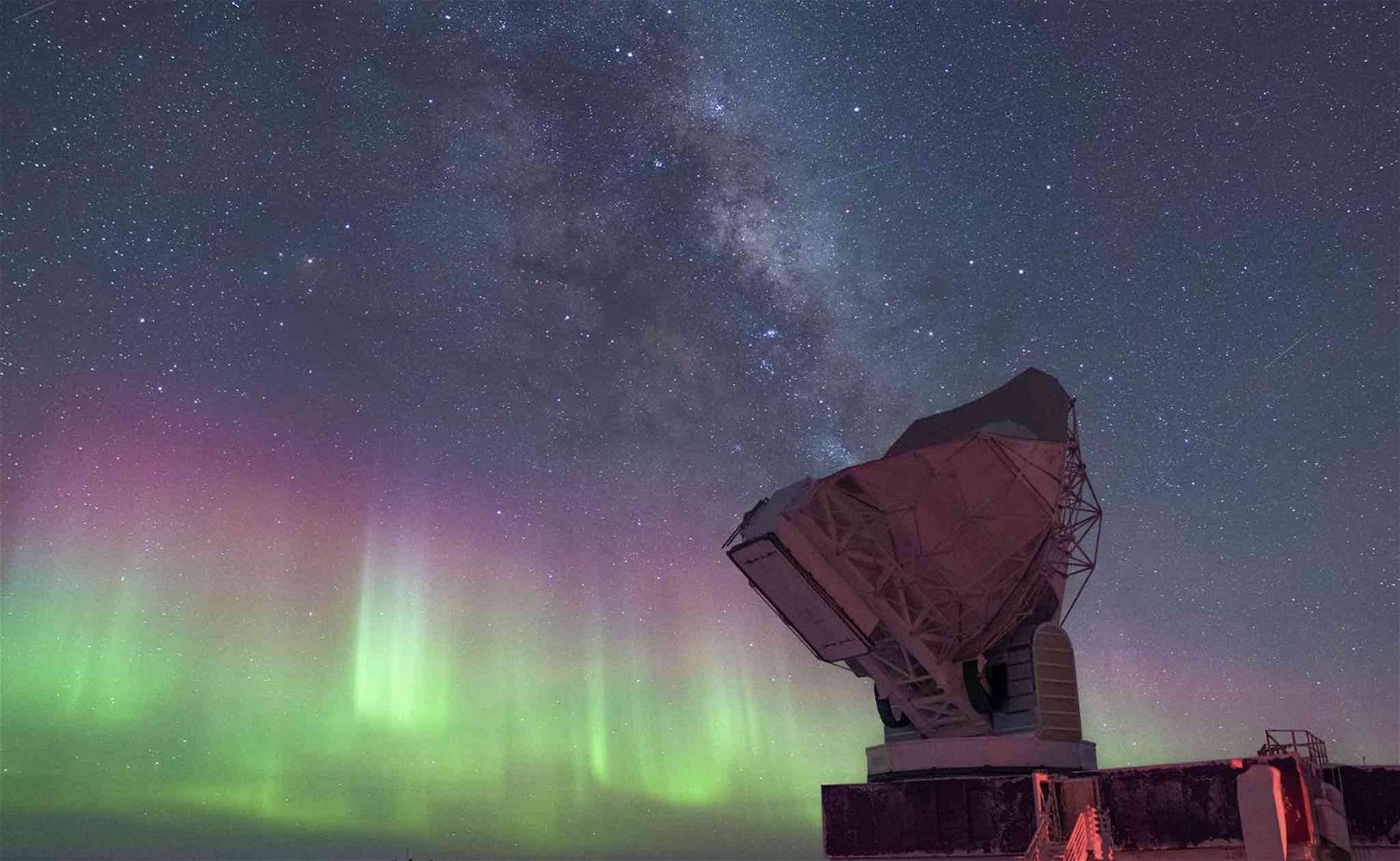An upgraded camera system on the South Pole Telescope is allowing scientists in Antarctica to observe the remnant light from the early universe, which could offer clues to a longstanding cosmic mystery.
Initial data collected over the last five years of observations at the National Science Foundation’s Amundsen-Scott South Pole Station and its SPT-3G camera are offering potential new breakthroughs in analysis of the cosmic microwave background (CMB), according to new findings.
The system, operations of which are a collaborative effort led by the University of Chicago, boasts an impressive 16,000 detectors, and is capable of measuring the CMB, which emanates extremely faint light left over from the Big Bang.
So far, their first five years of detections since SPT-3G was installed in 2017 are looking promising.
In a new paper describing their findings, the first measurement of gravitational lensing over a large swath of the Southern sky by SPT-3G is examined based on temperature data collected at two frequencies: 95 GHz and 150 GHz. This data, collected in 2018, was compared to existing models of the universe and found to be a good, offering only a small margin of error and seemingly aligning with past experiments conducted with other telescopes.
The data they obtained allowed the researchers to produce estimates for the number of cosmic structures in the universe, as well as its the overall matter density, in addition to forming predictions about the rate at which the universe is expanding, known by astrophysicists as the Hubble constant, which produced slightly higher values than other existing studies.
The team’s findings could imply the need for a renewed look at potential variations in the standard model of cosmology, and may help in generating estimates for both the curvature of space, and also the density of dark energy.
Significantly, combining their findings with existing data on CMB and measurements of cosmic distances implies an upper limit on the total mass of neutrinos, a variety of subatomic particles that are very light and hard to detect. Ultimately, the team’s findings could offer independent confirmation of previous findings that will enable astrophysicists to sharpen their overall image of the structure and composition of the universe.
Zhaodi Pan, the new study’s lead author calls the CMB “a treasure map for cosmologists.”
“Its minuscule variations in temperature and polarization provide a unique window into the universe’s infancy,” Pan said in a statement.
By measuring the distortion of light that results from gravitational lensing, Pan and his colleagues hope that clues about the early universe and the mysterious nature of dark matter could finally be unraveled.
“Dark matter is tricky to detect,” Pan said, since it doesn’t reveal its presence through interactions with light or electromagnetic radiation. However, gravitational lensing offers a potential avenue toward its study.
Since its discovery in the 1960s, astrophysicists have studied the CMB. However, Pan and his colleagues have collected data that offers significant contributions to its study, even though the majority of the data was collected over a period of just a few months in 2018.
Physicist Amy Bender, one of the study’s co-authors with Argonne National Lab, says her team’s work is only the beginning.
“We’ve got five more years of data that we’re working on analyzing now, so this just hints at what’s to come.”
The team’s paper, “Measurement of gravitational lensing of the cosmic microwave background using SPT-3G 2018 data,” appeared in Physical Review D.
Micah Hanks is the Editor-in-Chief and Co-Founder of The Debrief. He can be reached by email at micah@thedebrief.org. Follow his work at micahhanks.com and on X: @MicahHanks.

